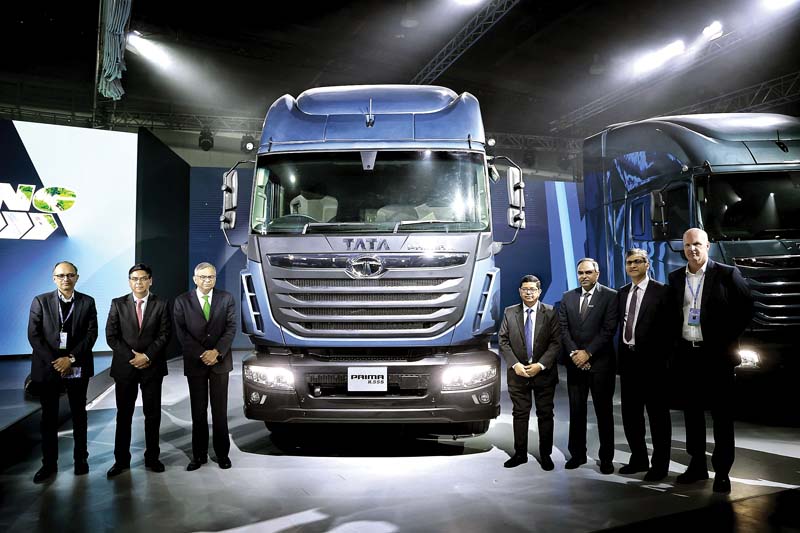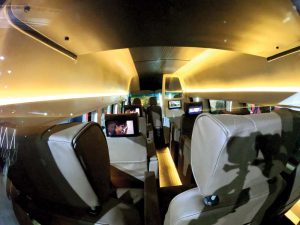Tata Motors showcased a huge lineup at Auto Expo 2023. Ashish Bhatia draws attention to the product differentiation strategy.
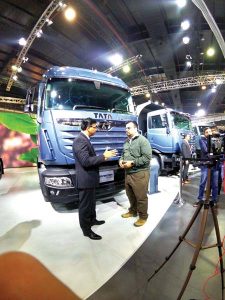

As a Group, Tata Motors showcased 40 variants at the Auto Expo 2023 – The Motor Show. As committed, despite a heavy launch calendar, the CV major managed to save new launches for the business end of the fiscal. This included 14 exclusive launches. The CV major addressed a vast spectrum of complete transport solutions across the people and cargo sub-segments. In a conscious move to align with the customer life cycle evolution, the company reiterated its focus on going beyond the product acquisition journey. To make the deal sweeter, the company drove in safer, smarter and greener vehicles and concepts. N Chandrasekaran, Executive Chairman, Tata Sons and Chairman, Tata Motors set the context ahead of the launch at the pavilion. He mentioned, “We are leading sustainability, energy transition and digitalisation-led transformation in each of our businesses. With an emphasis on zero emission power trains, cutting-edge technologies, advanced design engineering and best-in-class services, Tata Motors is accelerating the adoption of sustainable mobility and ‘net zero’ carbon emission goals.” “At the Auto Expo 2023, we are proud to present our vision of the future and its manifestation through our new-age vehicles, concepts and smart mobility solutions,” he expressed.
The company has set itself a target of turning ‘net zero’ in emissions by 2045. This could be achieved through Natural Gas, electrification and hydrogen-based power trains. The full range that had SCVs, ILCVs and M&HCVs piqued interest, backed by quality aggregates and collaborations with partners like Cummins Inc among other suppliers. The internal group synergies came to the fore with it too. The OEM created a buzz with its concepts that include the Prima E.55S claimed to be India’s first hydrogen fuel cell powered tractor concept. A close second was the Prima H.55S as a hydrogen powered ICE-concept truck which was well received too. The company also displayed the Starbus Fuel Cell EV claimed to be India’s first hydrogen fuel cell bus for commercial application. The unveils included a total of five products: Signa in the 28-55-tonne range and known to be underpinned by the new generation, all-energy architecture and modern cabin on offer for the M&HCV range.

55-tonner 4×2
tractor
The OEM also unveiled the new I&LCV (seven-19-tonne) truck Azura, said to be underpinned by a new generation architecture complete with new exteriors and interiors. The Ultra E.9 zero emission, is a smart logistics city truck for intracity, with high-capacity urban cargo transportation capabilities. The Magic EV brought in the electric variant of the last-mile passenger transport, market leader Tata Magic. The Prima E.28K, was also unveiled. Taking us through the launches, averred Girish Wagh, Executive Director, Tata Motors, “With our goal to achieve net-zero emissions by 2045, we are transforming mobility by re-imagining our entire product portfolio, value chain and operations. We have unveiled India’s cleanest, smartest, and most advanced range of logistics and mass mobility solutions across all segments of commercial vehicles. Underpinned by the state-of-the-art propulsion technologies, we are uniquely positioned to offer in every segment multiple green fuel options.”
Wagh opined that the commitment and proactive actions leading to the fructification of zero-emission technologies will enable customers to progressively and seamlessly transition to cleaner and commercially viable mobility solutions, as part of the short- and long-term goalposts. He went on to opine that there would be a mix of preferences going forward in conventional fuels, NG, blended fuels like flex-fuel to BEVs and hydrogen comprising of FECV and H2-ICE. “The country will balance the energy basket very judiciously to ensure that there is emission-reduction, import substitution taking place as of current consistently along with energy security making it imperative to have all of these technologies in the product portfolio,” he explained. For some time, he implied, the technologies will coexist until such time that conventional fuels are consumed lesser and ZEVs move up the ladder.
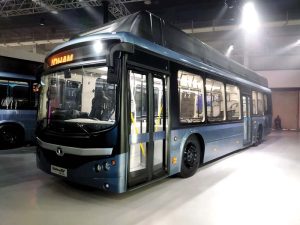
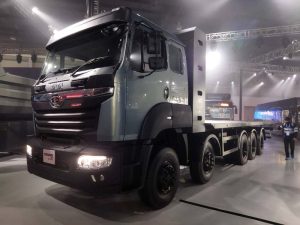
truck based on the
G-signa series
The company is preparing to be fuel-agnostic in its approach going forward, and lead the transition in the segment. Going beyond selling the product, the company is focused on building an ecosystem around its offerings. In the case of buses where the company won the tender and commenced its supplies, cited Wagh, the agreement revolves around the pillars of own, operate and maintain. This in turn required that the company developed skills and capabilities. In the case of ACE EV, to address customer anxieties, the company has bundled the product with comprehensive fleet management solutions to support the vehicle for five years. The company has its hands full with all these imperatives, he quipped. It is not a new development per se, the company has been at it for over a decade and a half. The company has worked on product iterations of the earlier showcased products for a go-to-market strategy relevant in today’s times.
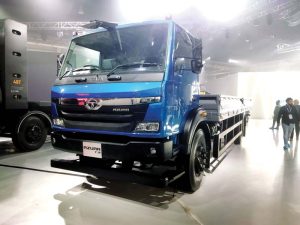

Referring to the LNG bus demonstrated first in 2017 at its Pune plant. At that point and time, the company collaborated with Petronet where the company received positive feedback. The buses are still operating, stated Wagh. Linking it to the company’s latest, LNG tipper, close to the production stage, the company is catering to mining customers to address this need. Agreeing with the company working on the fuel cells for over a decade now, the company has ensured that the technology graduates up to a certain benchmark. Also close to production, the company has gained acceptance in the form of an Indian oil tender in 2022 which the company readies to supply in a few months from now. The company will continue to develop these technologies further and wait for an opportune time to commercialise these. In some cases, the company expects to have to create that opportunity on its own. The entire industry pursuing green mobility, Wagh credited the climate change awareness for the spike in activity.
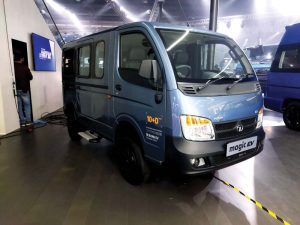


Admitting to the product classification going down to the wire with every sub-segment distinguished, Wagh gave the example of smaller vehicles and buses for that matter, meant for intracity applications, implying the need for a lower BEV range. Given that the technology has proved itself in passenger cars, the company is confident of applying it on a case-to-case basis to the CV segment cited. Here, when scaling up the application to heavy-duty and longer hauls, the considerations change as per Wagh. “BEV has its limitations. One needs more batteries leading to higher kerb weight, reducing the payload in turn. In these cases, hydrogen is emerging as a good option given that its energy density is better,” he mentioned. The company is backing this use case with H2-FCEV and H2-ICE.

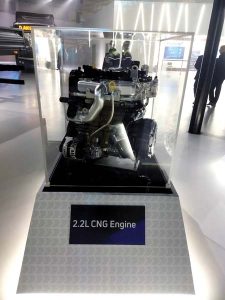

The OEM Yodha CNG and the Intra V20 Bi-Fuel (long range) and the Prima G.35K are said to be India’s first LNG Tipper for heavy-duty applications. It showcased the premium variant of the Winger that offers luxurious interiors in an attempt to redefine ride comfort. The Tata Ace EV and Starbus EV were also on display. To close the ecosystem loop, the company displayed the digital and connected solutions offerings in the ‘e-Dukaan’, fleet edge and fleet management solution. It was rounded off with the display of the 5.3-litre H2-ICE engine, 2.2-litre CNG engine and the E-Axle RAE 1010.
Also read, Tata Motors inaugurates scrapping facility



